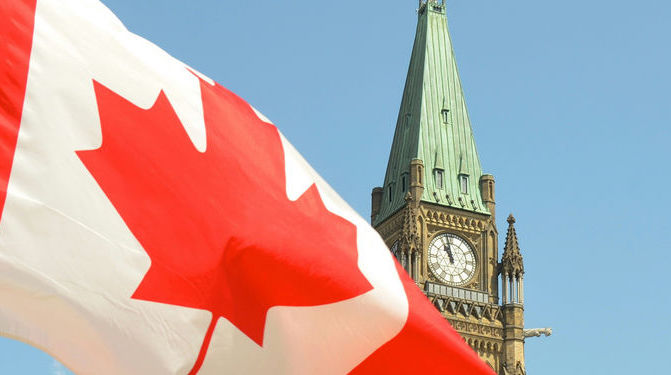by BeiChen Lin, Russell Investments
Key takeaways
- Canada’s 2025 budget shows an expected total deficit of nearly $80 billion for 2025-2026, almost a doubling of the deficit projection from December 2024. However, Canada’s strong fiscal position relative to other G7 peers means that additional borrowing should not be an issue.
- The 2025 budget appears to be more focused on medium-term measures to boost Canada’s competitive landscape, but offers fewer immediate relief measures for Canadian consumers impacted by the ongoing difficult economic situation.
- Despite the lack of full-throated endorsements from opposition parties, the budget will most likely pass, staving off a potential winter election.
- Ultimately, we continue to believe that Canadian investors would be best served by staying disciplined and taking a long-term approach to asset allocation.
Canada’s economy has remained under pressure for many months now. The Canadian economy contracted at an annualized pace of 1.6% in the second quarter, and may have only narrowly avoided a contraction in the third quarter. The unemployment rate has also risen to around 7%, nearly 2 percentage points above its 2023 low. Against that backdrop, many Canadians were eagerly watching the budget announcement to see what measures might be unveiled.
Debt and deficits to rise, but Canada’s fiscal situation still solid
Many economists had anticipated that the new budget would result in higher deficits for Canada, with their views varying more along the lines of just how high the deficits could go. In the budget announcement, the Canadian government estimates anticipated deficits in 2025-2026 could rise to just under $80 billion, nearly double the government’s original projections.
While higher deficits could cause some anxiety among investors, it’s important to note that the increase in the deficit projection was not entirely a surprise. Some previously implemented measures that were announced post the last fiscal update in 2024 (e.g., the elimination of the carbon tax) naturally meant that deficits would rise.
Moreover, Canada’s fiscal situation is in better shape than that of other G7 countries. According to the International Monetary Fund (IMF), Canada’s net debt as a percentage of GDP is only 13%, ranking it the best out of the G7 countries. Meanwhile, IMF data also shows that Canada’s general government balance as a percentage of GDP (a measure of the size of the deficit) is the second lowest among all G7 countries. This gives Canada more flexibility to run higher deficits and offers much needed latitude in the face of its economic challenges.
Measures prioritize medium-term boosts over short-term consumer relief
Even amid the economic headwinds, the latest budget appears to prioritize medium-term boosts rather than providing short-term consumer relief. For instance, the budget calls for an additional $115 billion to be spent on infrastructure over the next five years, and also allocates through tax credits and other incentives $110 billion toward spurring higher growth and productivity. Based on August 2025 GDP estimates, these measures combined represent 2% of Canada’s annual GDP. While these measures could potentially enhance Canada’s medium term GDP trend growth rate, they do not necessarily provide the direct short-term consumer relief that some Canadians may be seeking amid the fragile labor market backdrop.
Consequently, we continue to believe that monetary policy will have to play a key role in helping Canada navigate through any further potential economic slowdown. Although the Bank of Canada has already cut interest rates by a total of 2.75% from the cycle peak, we believe that additional interest rate cuts could be needed to successfully stabilize the economy.
Budget will most likely pass, avoiding another election for now
As of Nov. 5, opposition parties have been reluctant to provide a full-throated endorsement of the new budget. The Conservative Party of Canada is already seeking some amendments to the budget, while the New Democratic Party has indicated it will “study” the budget.
Although the Liberal Party is three seats shy of a majority, it also means that only three opposition lawmakers need to support the budget for it to pass and prevent a non-confidence situation from playing out. This lower hurdle might be why prediction markets anticipate less than a 10% chance of Canada heading to another federal election before the end of the year. If Canada can avoid another election this year, it can help limit the uncertainty in an already uncertain time period.
How investors should think about asset allocation in light of the budget
Ultimately, we view the budget as a mixed bag for Canada. Although the budget does noticeably increase the deficit, we think the fiscal situation gives Canada the trajectory needed to implement these measures without a large corresponding increase in borrowing costs.
Meanwhile, although we anticipate that some of the spending measures could potentially boost productivity over the medium-term, we think the budget alone won’t necessarily be a magic elixir to stabilize the near-term economic challenges.
For now, we continue to believe that Canadian investors would be well-served by sticking to their long-term plan. Even as cyclical risks might still be somewhat elevated in Canada, equity market valuations still remain more attractive than in the U.S, keeping us broadly neutral on the U.S – Canada asset allocation decision. And from a fixed income perspective, we continue to believe that Canadian government bonds can be a key defensive lever, especially if the economy were to cool further.
Copyright © Russell Investments














